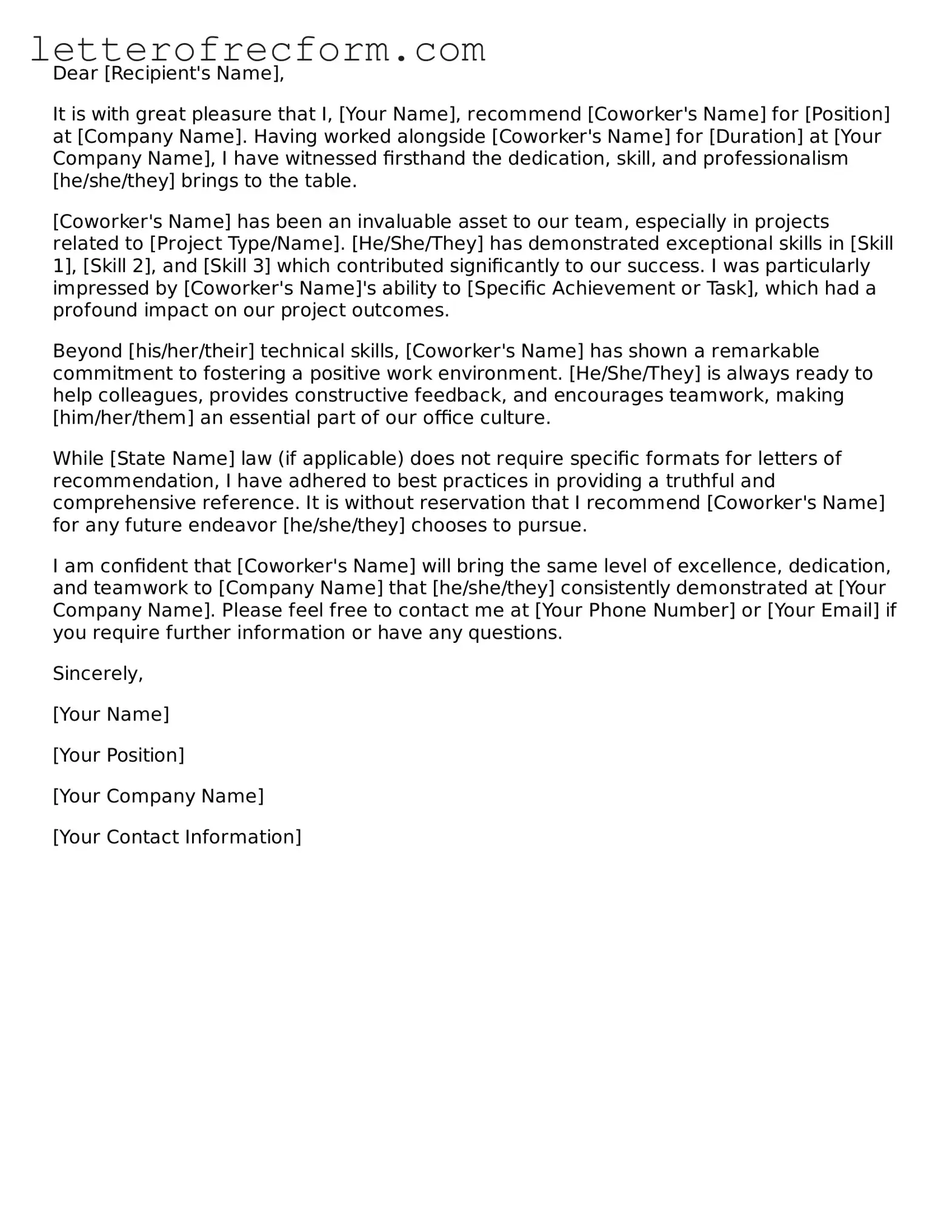Dear [Recipient's Name],
It is with great pleasure that I, [Your Name], recommend [Coworker's Name] for [Position] at [Company Name]. Having worked alongside [Coworker's Name] for [Duration] at [Your Company Name], I have witnessed firsthand the dedication, skill, and professionalism [he/she/they] brings to the table.
[Coworker's Name] has been an invaluable asset to our team, especially in projects related to [Project Type/Name]. [He/She/They] has demonstrated exceptional skills in [Skill 1], [Skill 2], and [Skill 3] which contributed significantly to our success. I was particularly impressed by [Coworker's Name]'s ability to [Specific Achievement or Task], which had a profound impact on our project outcomes.
Beyond [his/her/their] technical skills, [Coworker's Name] has shown a remarkable commitment to fostering a positive work environment. [He/She/They] is always ready to help colleagues, provides constructive feedback, and encourages teamwork, making [him/her/them] an essential part of our office culture.
While [State Name] law (if applicable) does not require specific formats for letters of recommendation, I have adhered to best practices in providing a truthful and comprehensive reference. It is without reservation that I recommend [Coworker's Name] for any future endeavor [he/she/they] chooses to pursue.
I am confident that [Coworker's Name] will bring the same level of excellence, dedication, and teamwork to [Company Name] that [he/she/they] consistently demonstrated at [Your Company Name]. Please feel free to contact me at [Your Phone Number] or [Your Email] if you require further information or have any questions.
Sincerely,
[Your Name]
[Your Position]
[Your Company Name]
[Your Contact Information]
